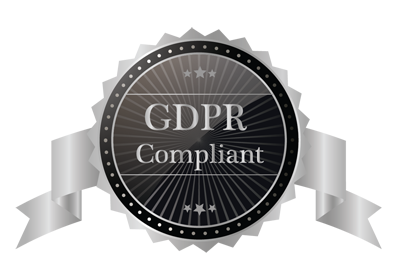Privacy is more vulnerable than ever, and the presence of hidden cameras and bugs in homes has become an alarming concern. As a UK-based company specialising in technical surveillance countermeasures (TSCM), Advanced Sweeping understands the importance of protecting your privacy and ensuring your home remains a haven.
That’s why we explore the various methods to detect hidden cameras and bugs below – to empower you to protect your personal space.
What Are Hidden Cameras and Bugs?
Hidden cameras and bugs are covert surveillance devices. They’re designed to capture audio, video, or both without the person knowing they’re being recorded. These devices can be incredibly small and disguised as everyday objects. Hence, they can be difficult to detect. Common types of hidden devices include:
- Wireless hidden video cameras
- Wired hidden video cameras
- Audio bugs
- GPS trackers
- Wi-Fi-enabled spy devices
Why Might Someone Plant Hidden Cameras or Bugs in a Home?
There are various reasons why someone might install hidden surveillance devices in a home. Some reasons include:
- Illegal surveillance by stalkers or ex-partners
- Corporate espionage
- Theft of personal information
- Voyeurism
- Monitoring of domestic staff or childcare providers
How Can I Detect Hidden Cameras and Bugs in My Home?
Detecting hidden cameras and bugs requires a combination of visual inspection, technical tools, and professional expertise. Here are some methods you can employ:
1. Visual Inspection
Carefully examine your surroundings for any suspicious objects or irregularities. Pay close attention to:
- Smoke detectors
- Clocks
- Picture frames
- Electrical outlets
- Light fixtures
Look for any unusual holes, wires, or lenses that might indicate the presence of a hidden camera.
2. Use Your Smartphone Camera
Many hidden cameras emit infrared light. This is invisible to the naked eye but can be detected by most smartphone cameras. To check:
- Turn off the lights in the room
- Use your phone’s camera to scan the area
- Look for any bright spots on the screen, which could indicate an infrared light source
3. RF Detectors
Radio Frequency (RF) detectors can help identify wireless hidden cameras and bugs. These devices scan for radio signals emitted by surveillance equipment. While not foolproof, they can be an effective tool in your arsenal.
4. Network Scanners
For Wi-Fi-enabled spy devices, use a network scanner to identify all devices connected to your home network. Any unfamiliar devices could potentially be hidden cameras or bugs.
5. Professional Bug Sweep
For the most thorough and reliable results, consider hiring a professional TSCM company like Advanced Sweeping. Our experts use sophisticated equipment and techniques to detect even the most well-hidden surveillance devices.
What Are the Limitations of DIY Detection Methods?
While DIY methods can be helpful, they have limitations:
- They may not detect wired or more sophisticated devices
- False positives are common, leading to unnecessary worry
- They require time and patience to be effective
- Some methods may not detect the latest surveillance technology
How Effective Are Hidden Camera Detector Apps?
Hidden camera detector apps can be a useful tool, but their effectiveness varies. These apps typically use your smartphone’s camera and magnetometer to detect potential hidden cameras. However, they may not detect all types of surveillance devices and can produce false positives.
What Should I Do if I Find a Hidden Camera or Bug?
If you discover a hidden camera or bug in your home:
- Don’t touch or move the device
- Document its location and take photos
- Contact the police to report the incident
- Consider hiring a professional TSCM company for a thorough sweep
How Can I Protect My Privacy from Hidden Cameras and Bugs?
To protect your privacy:
- Regularly inspect your home for suspicious devices
- Be cautious about who has access to your living space
- Secure your Wi-Fi network with a strong password
- Consider installing a security system
- Be aware of your surroundings in public spaces and holiday accommodations
How Often Should I Have My Home Checked for Hidden Cameras and Bugs?
The frequency of bug sweeps depends on your personal circumstances and level of risk. However, consider scheduling a professional sweep:
- After moving into a new home
- Following a break-up or divorce
- If you suspect you’re being stalked or harassed
- Periodically if you handle sensitive information at home
- Before and after important business meetings held in your home
Why Should I Hire a Professional Bug Sweep Service?
Professional bug sweep services, like those offered by Advanced Sweeping, provide several advantages:
- Expertise in the latest surveillance technologies
- Sophisticated equipment for detecting a wide range of devices
- Thorough inspection of all potential hiding spots
- Ability to detect both wireless and wired devices
- Professional documentation of findings for legal purposes if needed
How Can Advanced Sweeping Help Protect My Home from Hidden Cameras and Bugs?
At Advanced Sweeping, we offer comprehensive home bug sweeping services to ensure your home remains free from unwanted surveillance. Our expert team utilises state-of-the-art equipment to detect:
- Wireless and wired hidden cameras
- Listening devices
- GPS trackers
- Wi-Fi-enabled spy devices
- Other types of surveillance equipment
We provide thorough inspections, detailed reports, and expert advice on improving your home’s security against covert surveillance threats.
Take Control of Your Home Security Today
Protecting your privacy is paramount in today’s interconnected world. By understanding the threat of hidden cameras and bugs and employing effective detection methods, you can ensure your home remains a safe and private space.
Remember, when in doubt, it’s always best to consult with professionals like Advanced Sweeping to guarantee your peace of mind. Contact us today with any queries.

